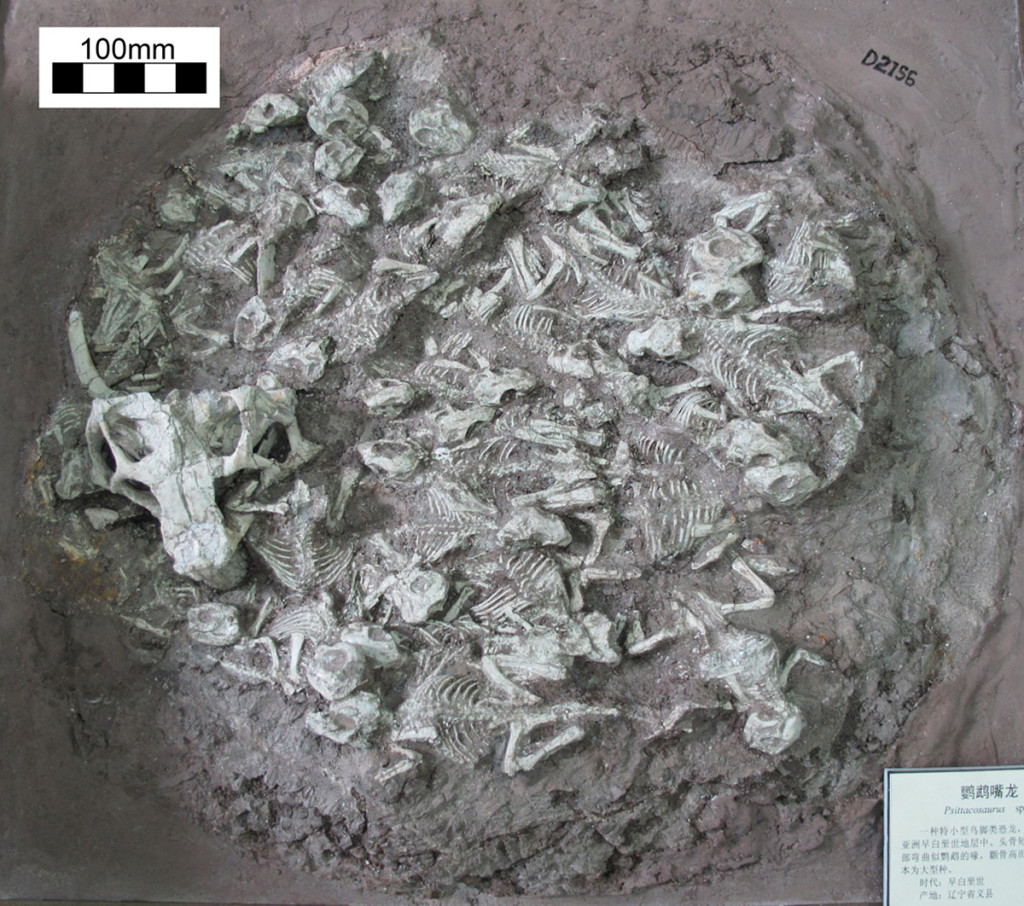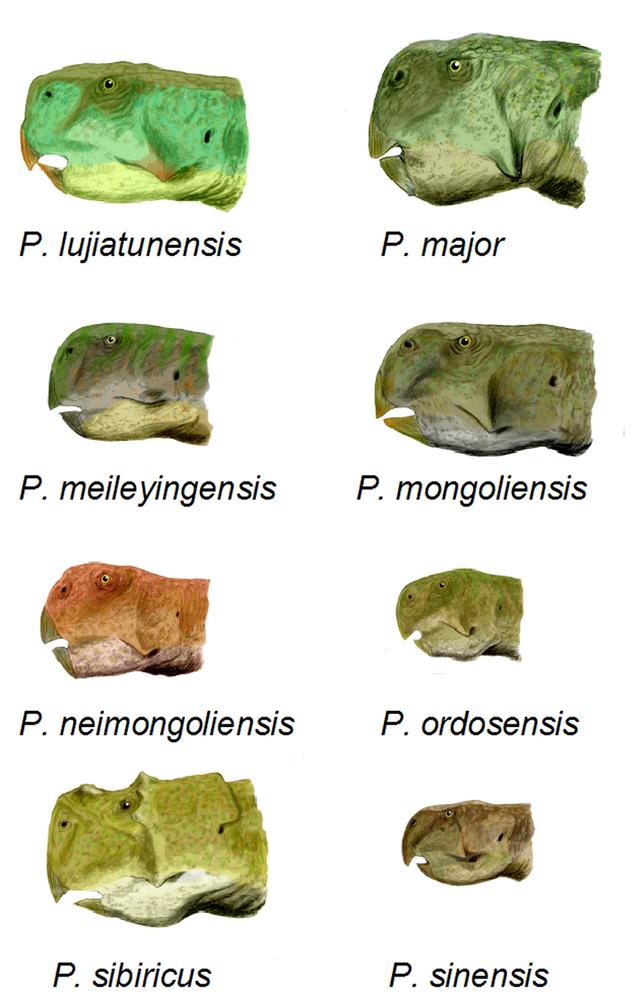
The remains of 25 young psittacosaurs were found together in China’s Liaoning Province (University of Pennsylvania).
Juvenile birds often act as carers in the nest, helping their parents to bring up younger siblings. These kind of babysitters are seen in as many as 300 species – about three per cent of all birds – and the behaviour is much more common than in any other group. Many Australian and African species have this kind of ‘helper at the nest’ arrangement, but it has been most well studied in North American species, such as the Florida scrub jay.
We’ve seen evidence of paternal care in dinosaurs, where males have been found preserved brooding nests, but there hasn’t been any evidence of helpers or babysitters at the nest. That is until now. New research from Peter Dodson and Brandon Hedrick at the University of Pennsylvania, and colleagues at the Dalian Museum of Natural History in China, may have found a dinosaur preserved in the act of babysitting.
The fossil in question was found in 2004, but had never been studied in detail. It features 24 hatchlings of the species Psittacosaurus lujiatunensis and a larger individual, which may or may not have been a sibling. The palaeontologists estimated the larger individual to have been about five years of age. This species is not thought to have reached sexual maturity until eight or nine years, so it can’t have been the parent of the hatchlings.
“Based on the development of the…bones, it is suggested that the juveniles are not embryonic, but are post-hatchlings,” the authors write this month in the journal Cretaceous Research. “In comparison with previous histologic analyses on P. lujiatunensis, it is shown that the large specimen associated with the juveniles is likely not yet an adult and that this assemblage is not an exemplar of parental care, but may be an example of post-hatching cooperation.”
More research is needed to confirm this scenario, but it’s an interesting hint of bird-like parental care in a herbivorous dinosaur. Psittacosaurus is an early member of the ceratopsian lineage that led to horned and frilled dinosaurs, such as Triceratops. The researchers believe these animals were killed in a castrophic mudslide known as a lahar, following a volcanic eruption.
Find more details here at the University of Pennsylvania.
